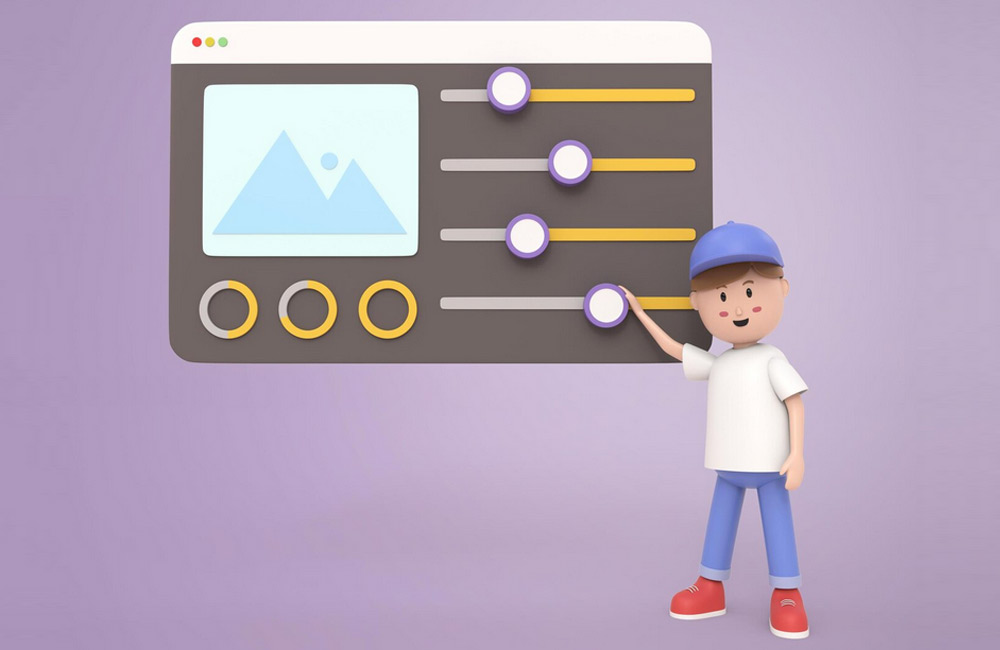Animations are no longer just gimmicks – they are one of the most effective tools to engage website visitors, guide them through content, and evoke emotions. When used correctly, they enhance usability and make your site more lively and intuitive. Modern animations tell stories, direct attention, and give your website a unique personality. They help convey complex content visually by elegantly showing processes or connections. Especially in times of short attention spans, motion is a key to deepening the connection between user and brand.
Why Motion Is Important in Web Design
Humans naturally respond to motion – it sparks curiosity and draws attention. Small, targeted animations – like content loading effects, scrolling animations, or hover effects on buttons – guide the eye without overwhelming. This improves user flow and makes the site structure easier to understand. Motion can also convey emotions, like lightness, trust, or dynamism. A site that moves organically feels "alive" and communicates professionalism in both design and technology. When used strategically, animations subtly influence user behavior, highlighting key content.
Positive Effects on User Experience (UX)
- Visual Feedback: Animations show the user that an action was performed, e.g., submitting a form or clicking a button. This feedback builds confidence and reduces uncertainty during navigation.
- Emotional Connection: Subtle motion creates dynamism and conveys modernity and professionalism. Users feel the site "responds" to them, enhancing trust.
- Better Orientation: Motion guides the eye, e.g., via scroll cues or highlighting interactive areas, making visitors feel guided without noticing consciously.
- Increased Time on Site: Interactive elements make pages more engaging and keep users longer. This can improve your SEO ranking as Google considers time-on-site a quality signal.
Strategically integrated animations improve not only visual experience but also brand engagement, making your website tangible and memorable – invaluable in today's attention-saturated online world.
Types of Animations in Modern Web Design
- Micro-Interactions: Small reactions to user actions, like a pulsing heart when clicked or a button softly lighting up, making digital interactions feel more human.
- Scroll Animations: Content smoothly enters the viewport while scrolling, popular on landing pages. This technique visually tells stories and guides reading flow.
- Hover Effects: Buttons or images change on mouse hover – subtle yet effective, indicating interactivity without extra explanation.
- Loading Animations: Progress indicators or smooth transitions bridge load times and keep attention, reducing drop-offs.
Depending on audience and brand identity, animations can be subtle or prominent. Minimalist designs benefit from gentle motion, while creative industries may use striking transitions. A great inspiration source is Dribbble, showcasing top animations from designers worldwide.
Tools and Libraries for Modern Web Animations
Several powerful tools and frameworks allow you to implement animations without extensive coding. Popular options include WOW.js for scroll-triggered animations, GSAP for advanced motion and responsive transitions, LottieFiles for scalable vector animations, Anime.js for precise keyframe control, and Framer Motion for React-based sites. These tools let you integrate motion efficiently, modernly, and cleanly.
Less Is More: When Animations Can Hurt
Too many or too flashy motions can distract or frustrate users. Long load times or chaotic transitions reduce UX. Every animation should have a purpose – for orientation, feedback, or emotional impact. Overloaded pages feel unprofessional or tiring. Align animations with your design system and test variations using tools like Hotjar to see how users respond.
Conclusion
Animations are a powerful tool to make your website lively, understandable, and memorable. When used strategically, they enhance UX, increase interaction, and strengthen brand image. But remember: less is often more. The best animation supports content rather than overshadows it. With a clear concept and sense of timing, you can bring motion to your brand without losing focus, creating digital experiences that impress and stick in memory.
Image: freepik.com

